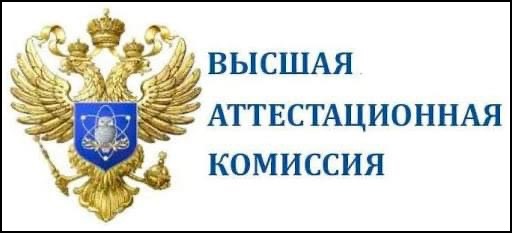СТРУКТУРА ВНУТРИГОДОВОЙ ИЗМЕНЧИВОСТИ ГИДРОФИЗИЧЕСКИХ ПОЛЕЙ ОКЕАНА В ГЛОБАЛЬНОЙ ВЕРСИИ МОДЕЛИ NEMO С СИСТЕМОЙ УСВОЕНИЯ ДАННЫХ
Аннотация
Для анализа внутригодовой изменчивости термических и динамических характеристик океана использованы расчеты по модели NEMO, включающие усвоение данных наблюдений температуры и солености воды буями Арго, а также спутниковых данных о состоянии ледового покрова и о температуре поверхности океана. Рассмотрены особенности географического и вертикального распределений годовых и полугодовых колебаний температуры воды, а также средний по Мировому океану спектр скорости течений. Определены районы с преобладающим вкладом полугодовых колебаний поверхностной температуры, приуроченные к приэкваториальной зоне и к северозападной части Индийского океана, находящейся под влиянием муссонных процессов.
Литература
- Зеленько А.А., Вильфанд Р.М., Реснянский Ю.Д., Струков Б.С., Цырульников М.Д., Свиренко П.И. Система усвоения океанографических данных и ретроспективный анализ гидрофизических полей Мирового океана // Известия РАН. Физика атмосферы и океана. 2016. Т. 52. № 4. С. 501–513. DOI: 10.7868/S0002351516040143.
- Зеленько А.А., Реснянский Ю.Д. Морские наблюдательные системы как составная часть оперативной океанологии (обзор) // Метеорология и гидрология. 2018. № 12. С. 5–30.
- Зеленько А.А., Реснянский Ю.Д., Цырульников М.Д., Струков Б.С., Свиренко П.И. Мониторинг крупномасштабной структуры гидрофизических полей океана // Современные проблемы динамики океана и атмосферы. М.: Триада ЛТД, 2010. С. 131–172.
- Кауркин М.Н., Ибраев Р.А., Беляев К.П. Усвоение данных наблюдений в модели динамики океана высокого пространственного разрешения с применением методов параллельного программирования // Метеорология и гидрология. 2016. № 7. С. 47–57.
- Реснянский Ю.Д., Цырульников М.Д., Струков Б.С., Зеленько А.А. Статистическая структура пространственной изменчивости термохалинных полей океана по данным профильных наблюдений системы Argo за 2005-2007 гг. // Океанология. 2010. Т. 50. № 2. С. 165–183.
- Скрипалева Е.А. Особенности сезонной изменчивости поля температуры на поверхности Индийского океана по контактным и спутниковым данным // Доклады Национальной академии наук Украины. 2009. № 12. С. 126–131.
- Струков Б.С., Реснянский Ю.Д., Зеленько А.А. Релаксационный метод усвоения данных по сплоченности морского льда в модели NEMO–LIM3 с несколькими категориями ледяного покрова // Метеорология и гидрология. 2019. В печати.
- Цырульников М.Д., Свиренко П.И., Горин В.Е., Горбунов М.Е., Климова Е.Г. Разработка схемы трёхмерного вариационного усвоения данных в Гидрометцентре России / 80 лет Гидрометцентру России. М.: ТРИАДА ЛТД, 2010. С. 21–35.
- Chen G., Wang X. Vertical structure of upper-ocean seasonality: Annual and semiannual cycles with oceanographic implications // J. Climate. 2016. Vol. 29. No. 1. P. 37–59. DOI: 10.1175/ JCLI-D-14-00855.1
- Dussin R., Barnier B., Brodeau L., Molines J.-M. The Making of the DRAKKAR Forcing Set DFS5. DRAKKAR/MyOcean Report 01-04-16. April 2016. 34 p. https://www.drakkarocean.eu/publications/reports/report_DFS5v3_April2016.pdf.
- Korotaev G.K. Operational Oceanography: A New Branch of Modern Oceanological Science // Her. Russ. Acad. Sci. 2018. Vol. 88. No. 4. P. 272–280. DOI: 10.1134/S1019331618040032.
- Madec G. and the NEMO team. NEMO ocean engine. Note du Pôle de modélisation / Institut Pierre-Simon Laplace (IPSL). France, 2008. No. 27. ISSN: 1288–1619. 386 p.
- Locarnini R.A., Mishonov A.V., Antonov J.I., Boyer T.P., Garcia H.E., Baranova O.K., Zweng M.M., Paver C.R., Reagan J.R., Johnson D.R., Hamilton M., Seidov D. World Ocean Atlas 2013. Volume 1: Temperature / S. Levitus Ed., A. Mishonov Technical Ed.; NOAA Atlas NESDIS 73, 2013. 40 p.
- Reynolds R.W., Smith T.M., Liu C., Chelton D.B., Casey K.S., Schlax M.G. Daily high-resolutionblended analyses for sea surface temperature // J. Climate, 2007. Vol. 20. P. 5473–5496. DOI: 10.1175/2007JCLI1824.1.
- Tsyrulnikov M.D., Svirenko P.I. A covariance model based on 3-D spatial filters: potential for flow-dependent covariance modelling // Res. Act. Atm. Ocean. Model. WMO. 2007. Rep. Nо. 35. Р. 1.39–1.40.
- Vancoppenolle M., Fichefet T., Goosse H., Bouillon S., Madec G., Maqueda M.A.M. Simulating
the mass balance and salinity of Arctic and Antarctic sea ice. 1. Model description and validation // Ocean Modelling. 2009. Vol. 27. Is. 1–2. P. 33–53. DOI: 10.1016/j. oceamod.2008.10.005. - Wyrtki K., Kilonsky B. Mean water and current structure during the Hawaii-to-Tahiti Shuttle Experiment // J. Phys. Oceanogr. 1984. Vol. 14. No. 2. P. 242–254. DOI: 10.1175/1520-0485(1984)014<0242:MWACSD>2.0.CO;2
- Zweng M.M, Reagan J.R., Antonov J.I., Locarnini R.A., Mishonov A.V., Boyer T.P., Garcia H.E., Baranova O.K., Johnson D.R., Seidov D., Biddle M.M. World Ocean Atlas 2013, Volume 2: Salinity. / S. Levitus Ed., A. Mishonov Technical Ed.; NOAA Atlas NESDIS 74, 2013. 39 p.
Передача авторских прав происходит на основании лицензионного договора между Автором и Федеральным государственным бюджетным учреждением науки Институт океанологии им. П.П. Ширшова Российской академии наук (ИО РАН)












